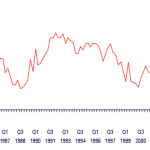This post is taken from Mises, The Theory of Money and Credit (1934), chapter 13 Monetary Policy (PDF, HTML), covering the limits of monetary policy. Follow this link for the series.
Emphasis mine.
6 The Limits of Monetary Policy
The results of our investigation into the development and significance of monetary policy should not surprise us. That the state, after having for a period used the power which it nowadays has of influencing to some extent the determination of the objective exchange value of money in order to affect the distribution of income, should have to abandon its further exercise, will not appear strange to those who have a proper appreciation of the economic function of the state in that social order which rests upon private property in the means of production. The state does not govern the market; in the market in which products are exchanged it may quite possibly be a powerful party, but nevertheless it is only one party of many, nothing more than that. All its attempts to transform the exchange ratios between economic goods that are determined in the market can only be undertaken with the instruments of the market. It can never foresee exactly what the result of any particular intervention will be. It cannot bring about a desired result in the degree that it wishes, because the means that the influencing of demand and supply place at its disposal only affect the pricing process through the medium of the subjective valuations of individuals; but no judgment as to the intensity of the resulting transformation of these valuations can be made except when the intervention is a small one, limited to one or a few groups of commodities of lesser importance, and even in such a case only approximately. All monetary policies encounter the difficulty that the effects of any measures taken in order to influence the fluctuations of the objective exchange value of money can neither be foreseen in advance, nor their nature and magnitude be determined even after they have already occurred.
Now the renunciation of intervention on grounds of monetary policy that is involved in the retention of a metallic commodity currency is not complete. In the regulation of the issue of fiduciary media there is still another possibility of influencing the objective exchange value of money. The problem that this gives rise to must be investigated (in the following part) before we can discuss certain plans that have recently been announced for the establishment of a monetary system under which the value of money would be more stable than that of a gold currency.
Read on…
Further Reading
Please see our literature for a range of further reading and also The Crack Up Boom.




I reckon this passage in a ‘Theory of Money and Credit’ was Mises’ first stab towards his later assertion that socialism cannot calculate, an idea which eventually brought down the Berlin Wall. For any of your readers, Steven, who are unfamiliar with this idea, they might want to try the following link:
=> Economic Calculation In The Socialist Commonwealth
=> http://mises.org/econcalc.asp